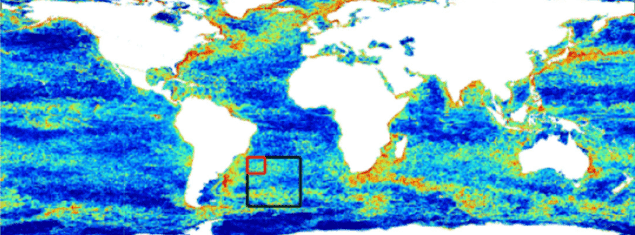
The dissipation of kinetic energy in the oceans has been modelled in intricate detail by Brodie Pearson and Baylor Fox-Kemper at Brown University. The duo used their model to explain how energy transmission can suddenly result in turbulent events such as intense flows. Their results could have important implications for studies of the flow of energy in the warming oceans.
The flow of kinetic energy within the oceans is a monumental and never-ending process that occurs on length scales from thousands of kilometres right down to millimetres – the latter being the scale at which kinetic energy is dissipated as heat. While oceanographers have a basic understanding of this process, how energy is transported and ultimately dissipated can be extremely complicated.
Ocean currents are strongly influenced by local effects such as coastlines, tides and winds. Global influences such as gravity and Coriolis forces also play important roles. In addition, sudden and intense “intermittent” events such as strong flows can occur. These are related to turbulence and difficult to predict. Although rare, intermittent turbulence can have a strong influence on the dynamics of the ocean as a whole.
Topographic oceans
Pearson and Fox-Kemper realized that to understand intermittency and other aspects of energy flow in the oceans, they would need simplified numerical simulations that incorporate both land masses and ocean topography. To construct their model, the duo broke oceanic movements down into two parts. This allows the simulation to compute separately the dynamics of large, kilometre-scale flows – which is a relatively simple task – as well as small-scale flows, which are a much more intricate problem that requires approximation techniques.

Behold the bubbly ocean
The simulations allowed Pearson and Fox-Kemper to confirm that kinetic energy is transferred to logarithmically shorter lengths scales at a constant rate before dissipating at the smallest scales. However, to their surprise, the researchers found that intermittent turbulence did not only occur on small scales as they had expected. Instead they found that intense flows could occur abruptly even on a scale of kilometres – a phenomenon they had not predicted.
Energy budget
The discovery could be important for oceanographers and climate scientists studying the ocean’s energy budget, which describes how the seas absorb and distribute huge amounts of energy from the Sun. As the oceans warm as a result of climate change, it will be important to understand how this process could change.
The simulations are described in Physical Review Letters.



